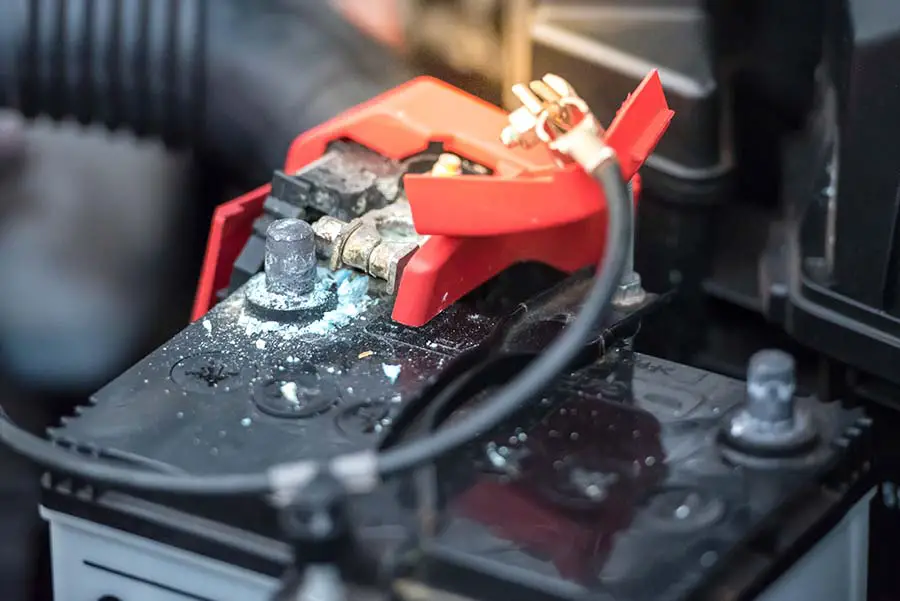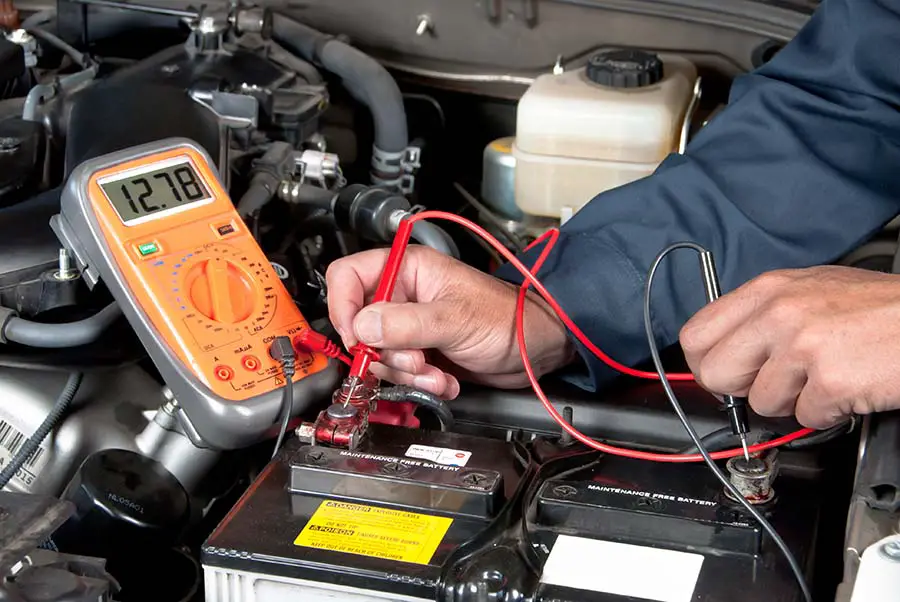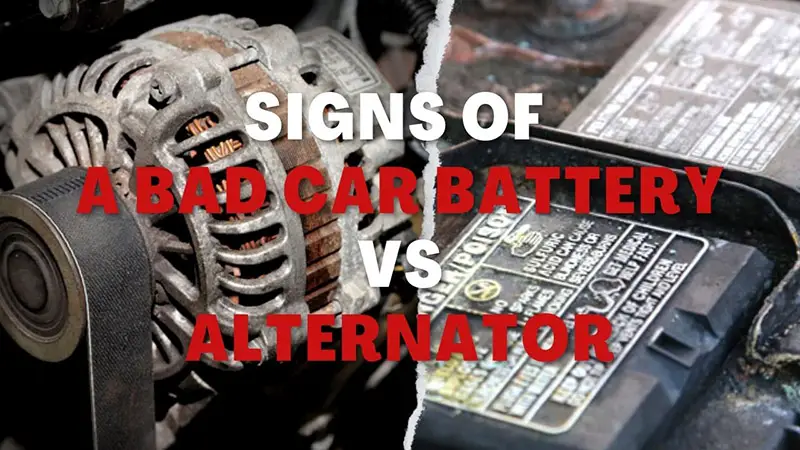The battery powers the car’s engine and does so much more. Without it, you wouldn’t be able to do anything with your car. Therefore, frequent battery checks and inspections of electrical systems are needed. Not only when it first starts to exhibit indications of instability, but you may lessen your risks of battery failures.
How Many Volts Should A Car Battery Have?
The motivation of electrons, or how they migrate from one location in the electric circuit to another, is represented by a circuit voltage. The majority of modern cars come equipped with a 12-volt battery. The battery consists of six cells, each producing 2.1 volts of electricity when fully charged.
Your cell car batteries should measure between 13.7 and 14.7 volts when your car is running. This voltage range is ideal for automobile batteries. If it displays 12.4 volts, the battery barely performs at 75% of its potential. The voltage drop indicates that either the vehicle battery isn’t receiving sufficient energy or that it is getting old and will soon need to be replaced, even if it will still do the job.
After then, battery power rapidly decreases; a measurement of 12.2 volts indicates 50% power, and 12 volts only indicates 25% power. It is regarded as totally a dead battery when it hits 11.9 volts.
How To Test Your Car Battery’s Voltage?
Using A Multimeter
Volts, amps, and resistance from an electrical source can all be measured with a multimeter, an electronic measurement device. Voltage battery tests are typically used for a multimeter in the automobile industry. Just stick to the instructions below the battery voltage range:
- Step 1: Turn off the vehicle completely. Ensure that the headlights and engine are both off. After that, lift the hood to reveal the car’s battery.
- Step 2: Set up your multimeter: Each device varies significantly, although many test various current kinds. That’s why you should set your multimeter to DC or DCV, which stands for Direct Current Voltage, in order to check the current battery status. The DC power should be adjusted to a voltage of between 15 and 20 volts.
- Step 3: Connect the device: The red/positive line should first be connected to the positive terminal. Next, connect the black/negative sensor to the battery terminal with the same color. If the wrong terminal is connected to each probe, you’ll obtain a negative value. (see more: Which Battery Terminal To Connect & Disconnect First)
- Step 4: Check battery voltage: A healthy battery will produce 12.4–12.9 volts when the automobile is not in use. Anything less does not automatically imply that the battery is defective.
The power system can have used up in your automobile, or your generator might malfunction. To check if the battery is still working, recharge it and test again later.
- Step 5: Perform a load test: A load test is the next stage in detecting whether your automotive batteries are defective.
- While monitoring the multimeter’s voltage, have someone start the vehicle. As the engine turns, its minimum voltage should be no more than two volts. A battery replacement is recommended if the voltage falls any lower or falls below 9.5 volts.
Other Method
You can test your power system by starting the engine and switching on the headlights if you don’t have a multimeter to measure the voltage of your battery. If the lights are weak, the generator is not producing enough or any charge, and the battery is thus powering the lights.
As you rev the motor, the lights should go brighter. If they don’t, the generator may not be providing enough energy at idle to maintain the battery charger.
Your charging system is presumably in good shape if the lights are bright as usual and don’t vary the intensity as the engine revs. If the headlight test comes back normal, but you’ve been having issues with your battery, you should inspect to see if the battery is retaining a charge or if anything on the car is draining it.
When To Replace Your Car Battery?

While a low measured value is a clear sign of battery trouble, the readout might also be affected by a depleted battery, partly as a result of headlights being left on for many hours after shutting off your car. Additionally, operating a lot of accessories simultaneously may deplete the battery.
Simply connect wires from a defective battery to a powerful one to repair it. Use the voltmeter to determine the battery’s capacity after keeping the cells linked for a few minutes to guarantee adequate power transmission. Your automobile battery may need to be replaced if it continues to operate weakly.
Conclusion
You don’t need to be a mechanic to test how many volts should a car battery have. As we just discussed, keeping a decent battery is essential to regular automobile maintenance. The recommended best practice is frequently conducting a multimeter-based car battery voltage test.










0 Comments